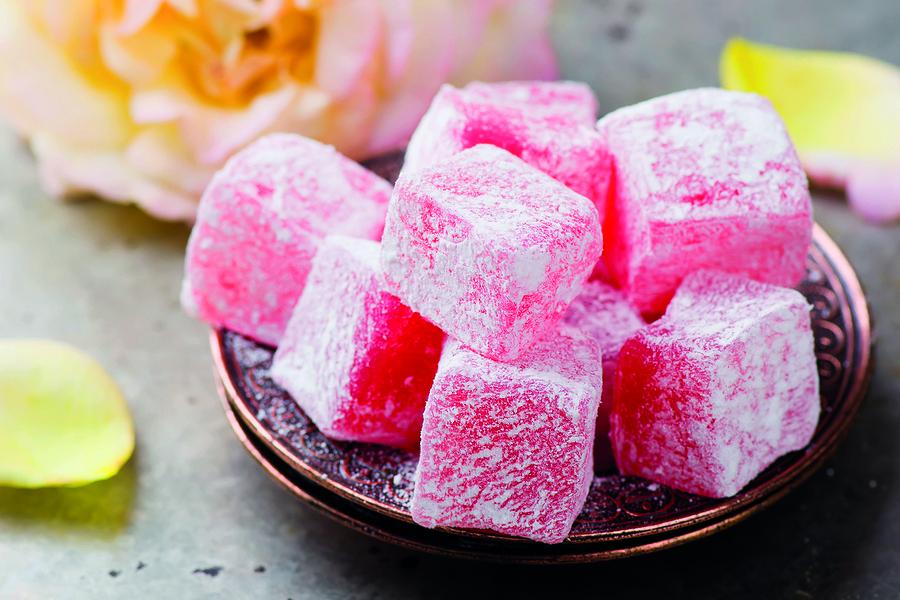


I often wonder, in the case of weird foods such as prawns (essentially sea spiders), snails (essentially well… snails) or fungus (the stuff that grows on real food to show that it’s out of date) who was the first to say to themselves “let’s go ahead and scoff that down”. I get the same thoughts racing through my head when I think about Turkish Delight - which is a lot. Before I began looking into the origins of Turkish Delight - I just assumed that it was made by boiling up hooves of various animals, with half being set aside for glue and the remainder being cheered up with the addition of icing sugar, pistachio nuts and rose water. However having checked on Wikipedia [citation needed] it turns out that Turkish Delight is even more delightful than I assumed. Turkish Delight is traditionally made from water and flour as the binding agents sweetened with honey or molasses and flavoured with rosewater, lemon peel, or orange peel - all entirely without the aid of hooves. The exact origin of Turkish Delight are lost in the mists of time. But according to the Hacı Bekir company, the sweets as they are known today were developed by Hacı Bekir who moved to Istanbul from his hometown Kastamonu and opened his confectionery shop in 1777 In Arabic the treat is called Lokum, which apparently means throat comfort. So essentially, it can trace its roots back to a common ancestor shared with Tunes and Fisherman’s Friend although they have since become independent species though the separation of continents and can no longer interbreed…